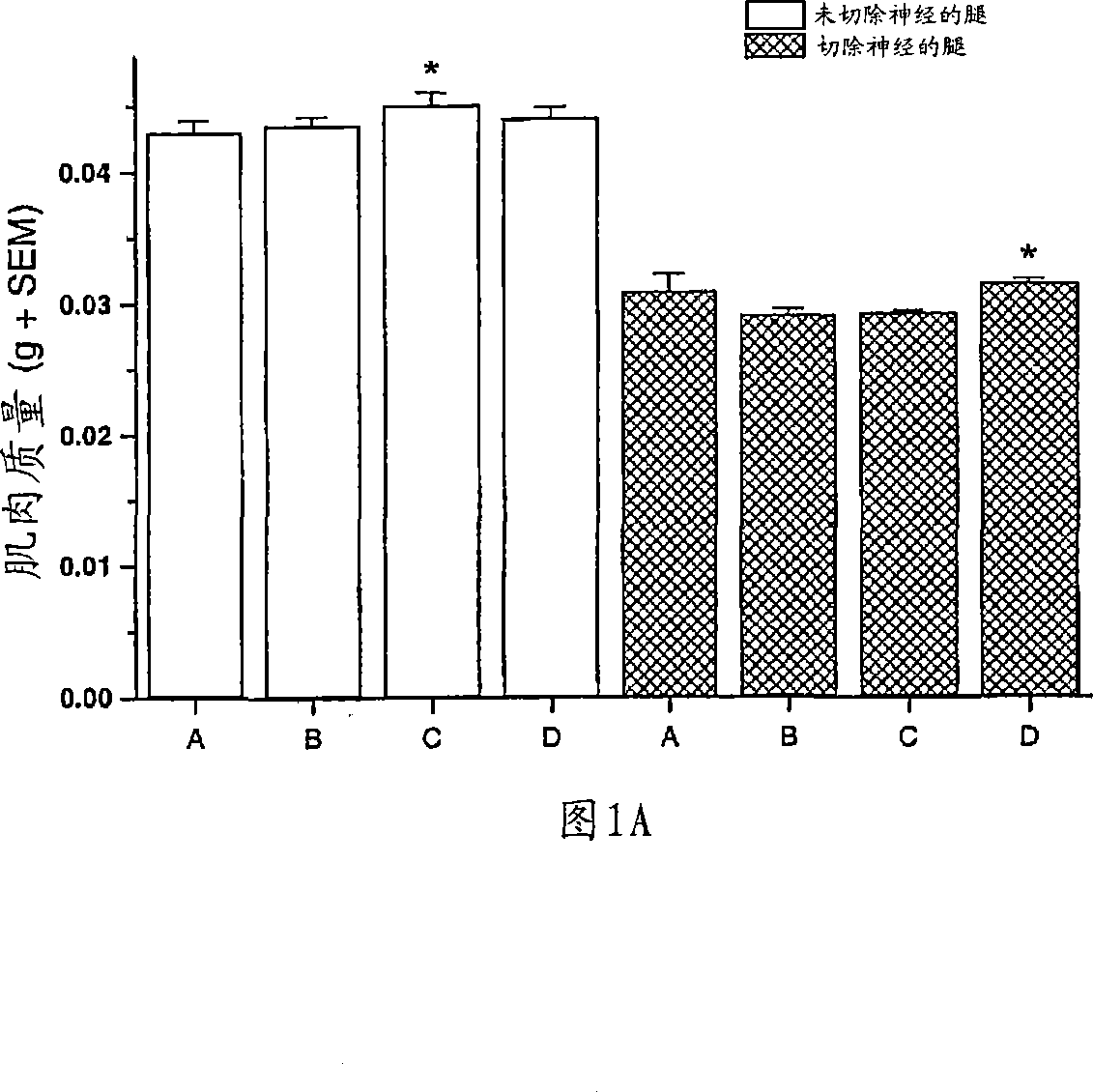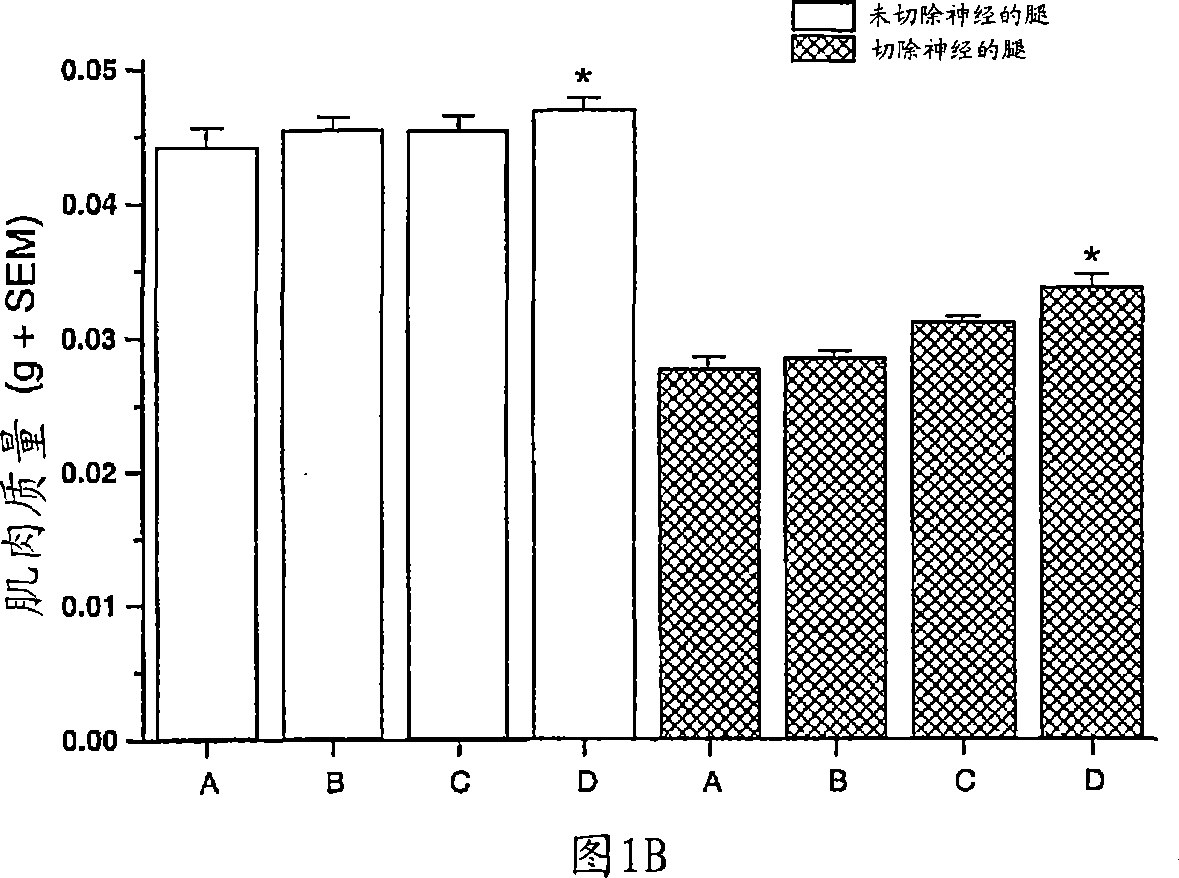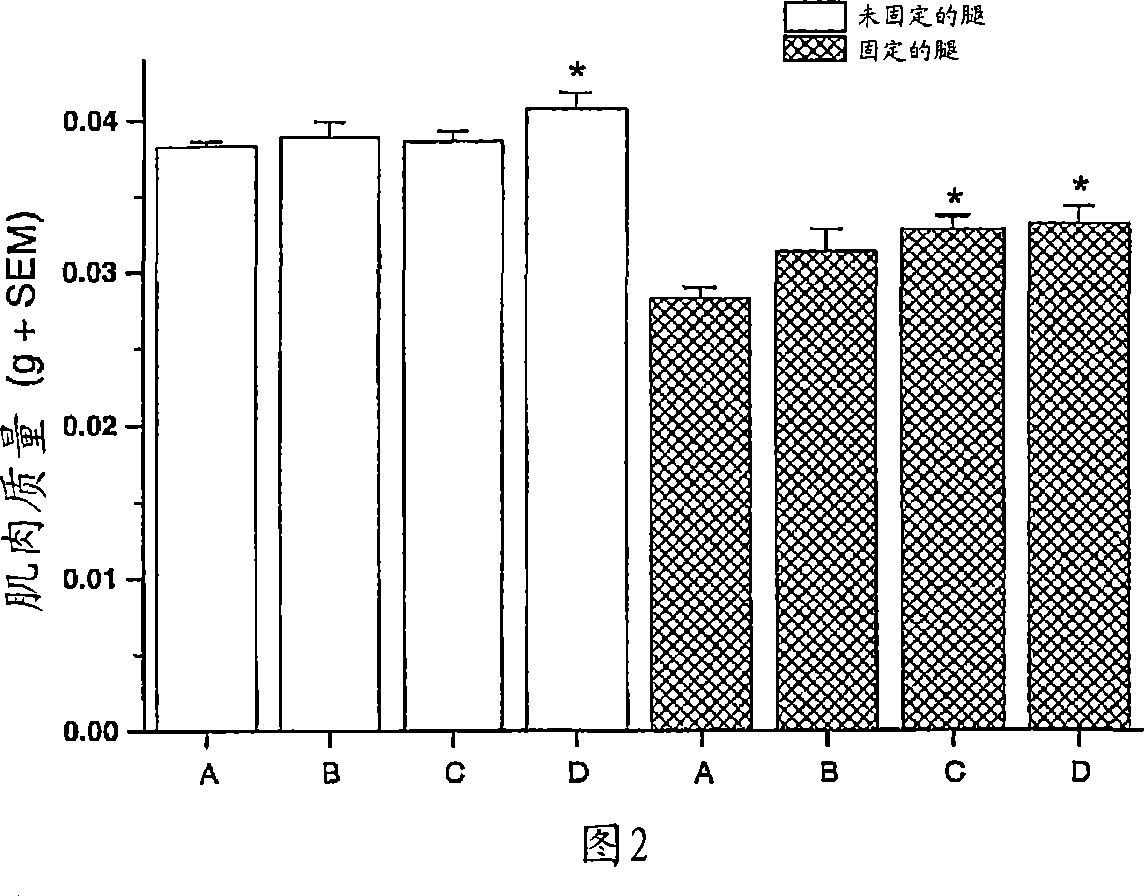Methods for identifying compounds for regulating muscle mass or function using dopamine receptors
A technology for muscle mass and dopamine, which can be used in the screening of compounds, chemical instruments and methods, active ingredients of heterocyclic compounds, etc., and can solve problems such as lack of screening methods
- Summary
- Abstract
- Description
- Claims
- Application Information
AI Technical Summary
Problems solved by technology
Method used
Image
Examples
preparation example Construction
[0085] IV. Preparation of dopamine receptor antibody
[0086] Antibodies that selectively recognize one or more epitopes of dopamine receptors are also encompassed by the invention. These antibodies include, for example, polyclonal antibodies, monoclonal antibodies, chimeric antibodies, human antibodies, single chain antibodies, Fab fragments, F(ab') 2 Fragments, molecules produced using Fab expression libraries, human antibodies (polyclonal or monoclonal) produced in genetically transcribed mice, and epitope-binding fragments of any of the above. For therapeutic use, chimeric or human antibodies are preferred; human antibodies are most preferred.
[0087] Antibodies can be used in conjunction with the compound screening protocols described herein to evaluate test compounds, e.g., immobilized dopamine receptor polypeptides, or these antibodies can be used in conjunction with gene therapy techniques, to evaluate, e.g., dopamine receptor expression in cells or Expression dir...
Embodiment 1
[0137] Example 1. Construction of human D 1 and D 5 Dopamine receptor expression vector.
[0138] Person D 1 and D 5 Dopamine receptors (hD 1 and hD 5dopamine receptor) DNA sequences, designation numbers X58987 and X58454, were retrieved, and two oligonucleotides, including one containing the 5' end of the gene, started at the start codon (5 'oligonucleotide), and an oligonucleotide containing a stop codon, comprising the 3' end of the gene (3' oligonucleotide), was synthesized. These oligonucleotides are designed to contain restriction endonuclease sites that are not present in the D 1 or D 5 In the dopamine receptor gene, one unique site is in the 5' oligonucleotide and a different unique restriction endonuclease site is in the 3' oligonucleotide. In addition, the 3' oligonucleotide contains a polyadenine appended signal sequence. The double-stranded cDNA of human skeletal muscle was purchased from "Universal QUICK-Clone cDNA collection" (the Universal QUICK-Clone c...
Embodiment 2
[0140] Example 2. Receptor Binding Identification
[0141] Receptor binding assay of compounds in whole cell format by placing HEK293 / CRE-LUC / pIRESneo / D from Example 1 1 or D 5 Dopamine receptor cells were grown in a 96-well polylysine-coated plate. Under 5% carbon dioxide / 95% air at 37°C, cells were seeded in DMEM medium containing 10% fetal bovine serum, penicillin / streptomycin solution, L-glutamine, and non-essential amino acids, and then Cells were cultured overnight. The medium was removed and an appropriate amount of 3H-SCH23390 in MEM (Life Technologies, Rockville, MD) + 10% Seablock (Clonetech Inc., Palo Alto, CA, USA) was added. The cells were incubated with 3H-SCH23390 for 90 minutes at room temperature, and then washed 4 times with magnesium- and calcium-free phosphate-buffered saline (Life Technologies, Rockville, MD). After the final wash, cytoscint es scintillation fluid (ICNBiomedical, Inc., Costa Mesa, CA) was added, and the plate was read on a TopCount N...
PUM
 Login to View More
Login to View More Abstract
Description
Claims
Application Information
 Login to View More
Login to View More - R&D
- Intellectual Property
- Life Sciences
- Materials
- Tech Scout
- Unparalleled Data Quality
- Higher Quality Content
- 60% Fewer Hallucinations
Browse by: Latest US Patents, China's latest patents, Technical Efficacy Thesaurus, Application Domain, Technology Topic, Popular Technical Reports.
© 2025 PatSnap. All rights reserved.Legal|Privacy policy|Modern Slavery Act Transparency Statement|Sitemap|About US| Contact US: help@patsnap.com



